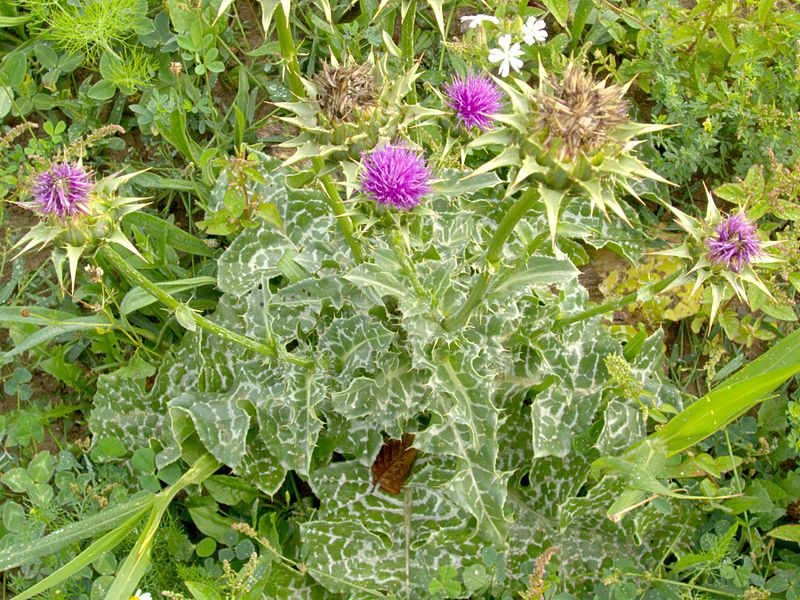Milk thistle (Silybum marianum) is native to the Mediterranean region and has a long history as a medicinal herb. It has now become an invasive weed thanks to its prolific production of long-lasting seeds. Traditionally it has been used to treat liver disease, cancer and as an antidote to poisoning from death cap mushrooms. No scientific proof exists that the plant has medicinal properties that would treat these conditions.
Milk thistle is edible and has been eaten in the past. The roots can be eaten cooked or raw. In the spring when the plants first appear, they can be eaten cooked. The flowers have also been consumed like artichokes.
The plants are toxic to livestock. If they are present in a pasture and consumed, the potassium nitrate in the plants combine with the hemoglobin in their blood to form methaemoglobin which blocks the blood’s ability to carry oxygen causing oxygen deprivation in the animals, killing them.
Milk thistle grows as a biennial in zones 6 – 9. In colder growing zones, it grows an annual. The plant is quite large, growing up to 6 feet tall. The leaves are about 10 wide and 20 inches long with distinct white veins. Like their thistle relatives, the leaves have ½ inch spines around the edges.
Each plant produces a single flower in June through August. The flowers are the typical thistle flowers, 2 ½ inches in diameter and either red or purple. They are often dried and used in bouquets of dried flowers. Each flower can produce up to 190 seeds which can survive in the soil for almost 2 decades, a good reason why milk thistle has become invasive!
Milk thistle is easy to grow from seed. You can direct sow the seeds in your garden in either the spring or the fall. Surface sow them. Don’t cover them. The seeds need sunlight to germinate. Germination should occur within 2 weeks. Thin the seedlings to 12 to 15 inches apart.

